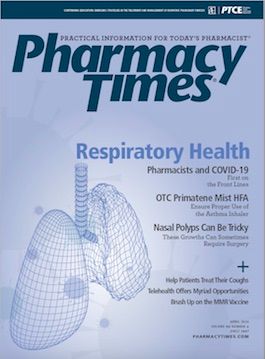Publication
Article
Pharmacy Times
Competition Lowers Drug Prices, FDA Says
Author(s):
The number of competitors has a significant effect on generic products' price reductions, according to a recent report.
Products with a single generic producer see a 39% reduction in average manufacturer prices (AMPs) compared with a reduction of more than 95% for products with 6 or more competitors, according to a recent FDA report detailing the effect of generic competition on drug prices.1
Generic drugs typically cost less than their brand-name counterparts because manufacturers do not have to repeat animal and clinical studies, as is required of the makers of brand-name medications.2 Generic drugs saved the US health care system $1.67 trillion between 2007 and 2016, according to the FDA.2
In addition to the lack of required animal and clinical research, however, the FDA found that increased competition directly affects generic drug prices. After an initial generic drug entry, the drug prices decline as competition increases, according to the report.
The agency calculated the data using both the AMPs reported to the Centers for Medicare & Medicaid Services and invoice-based wholesale prices reflecting pharmacy acquisitions from IQVIA’s National Sales Perspective database.1 Although prices dropped according to both models, the investigators found steeper declines associated with additional generic competition based on invoices for pharmacy acquisitions.1
The products included in the analysis were limited to those with an initial generic entry between January 2015 and December 2017. The investigators excluded products with generic entry but without brand sales during the 3 months prior to generic entry because no baseline brand price was available for comparison. They also excluded generic entrants with fewer than 3 consecutive months of generic sales after entry. The authors noted that the latter exclusion was because such occurrences usually represent repackagers’ selling of the brand-name agent and are thus not considered a generic entry.1
A total of 240 unique products with initial generic entry were available during the period, as well as 1088 national drug codes (NDCs) for generic products, according to the IQVIA database. Of the 240 unique products, 207 had available AMP data. Of the 1088 NDCs, 753 had available AMP data. After applying the inclusion criteria on those remaining, the investigators identified 181 unique products and 711 unique NDCs to include in the analysis.1
After calculating the price differences for both AMP and invoice models, the authors broke them down by the amount of competition.1 For products with just 1 generic producer, the generic AMP was 39% lower than the brand AMP before competition compared with a 31% price reduction using invoice prices. Generic prices were 54% lower than the brand-drug prices before generic competition with 2 competitors and 44% lower when calculated using invoice-based drug prices. With 4 competitors on the market, AMP data showed that generic prices were 79% lower than the brand-drug prices before generic entry compared with 73% using invoice prices. Finally, with 6 or more competitors, the investigators found, generic prices using both AMP and invoice prices represented reductions of more than 95% compared with brand prices.
This new report builds on earlier work by the FDA, including a 2005 report on generic competition and drug prices.
“On average, the first generic competitor prices its product only slightly lower than the brand-name manufacturer,” according to that report. “However, the appearance of a second generic manufacturer reduces the average generic price to nearly half the brand name price.”3
Products with a large number of generic manufacturers typically see average generic prices fall to just 20%, or even lower, of the brand-name price according to that report.3
The FDA has made increasing generic competition a significant priority, including an action plan released in 2017.4 By closing loopholes allowing brand-name companies to delay generic competition, incorporating these data, and removing barriers to generic drug development, the agency hopes to increase access and competition for those in need of generics.4
REFERENCES
- Conrad R, Lutter R. Generic competition and drug prices: new evidence linking greater generic competition and lower generic drug prices. FDA website. www.fda.gov/media/133509/download. Published December 2019. Accessed December 17, 2019.
- Generic drug facts. FDA website. www.fda.gov/drugs/generic-drugs/generic-drug-facts. Updated June 1, 2018. Accessed December 17, 2019.
- Generic competition and drug prices FDA website. wayback.archive-it.org/7993/20190914072411/https://www.fda.gov/about-fda/center-drug-evaluation-and-research-cder/generic-competition-and-drug-prices. Updated November 20, 2017. Accessed December 17, 2019.
- FDA drug competition action plan. FDA website. www.fda.gov/drugs/guidance-compliance-regulatory-information/fda-drug-competition-action-plan. Updated December 16, 2019. Accessed December 17, 2019.
[PS1]Replaced with direct URL.







